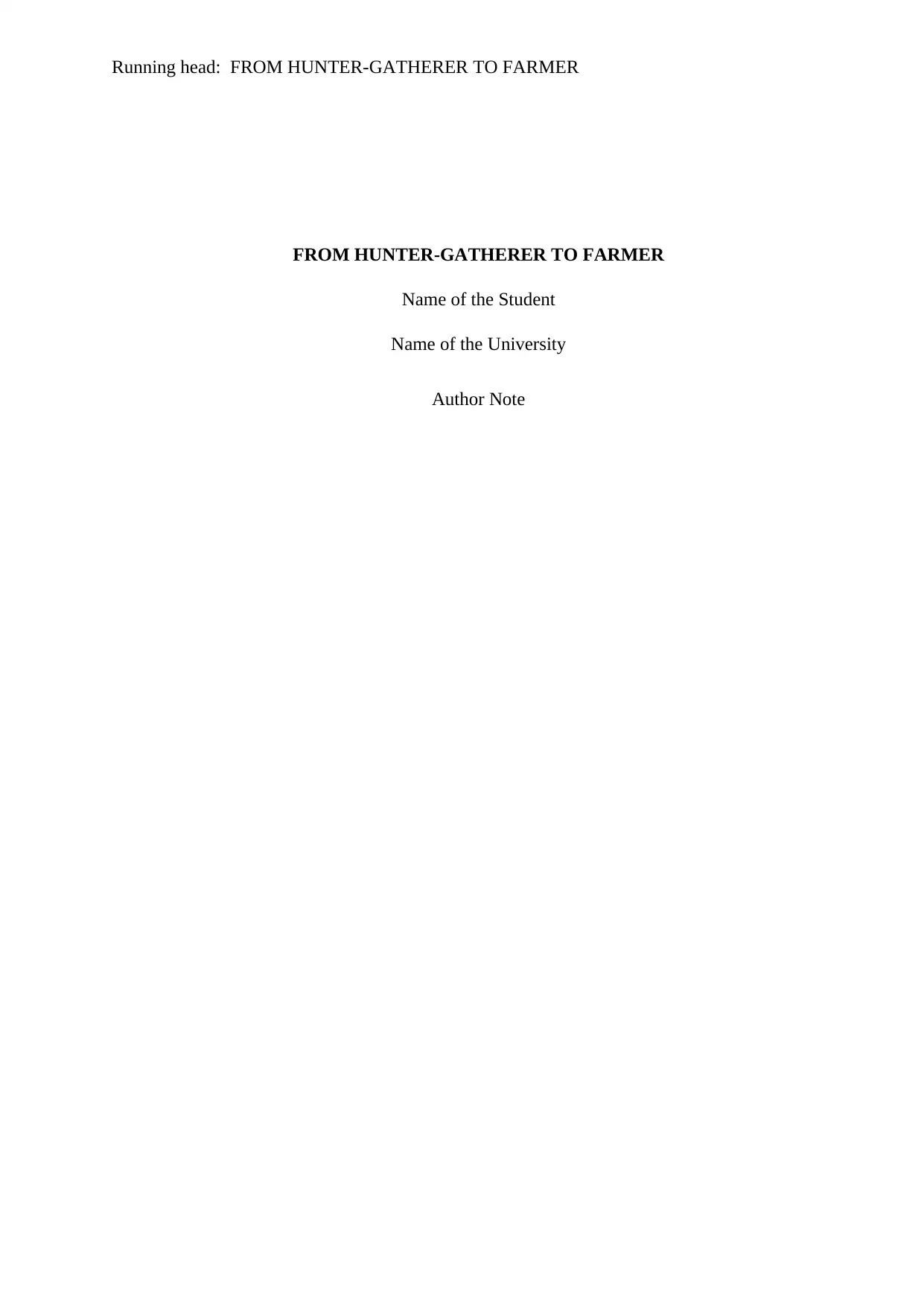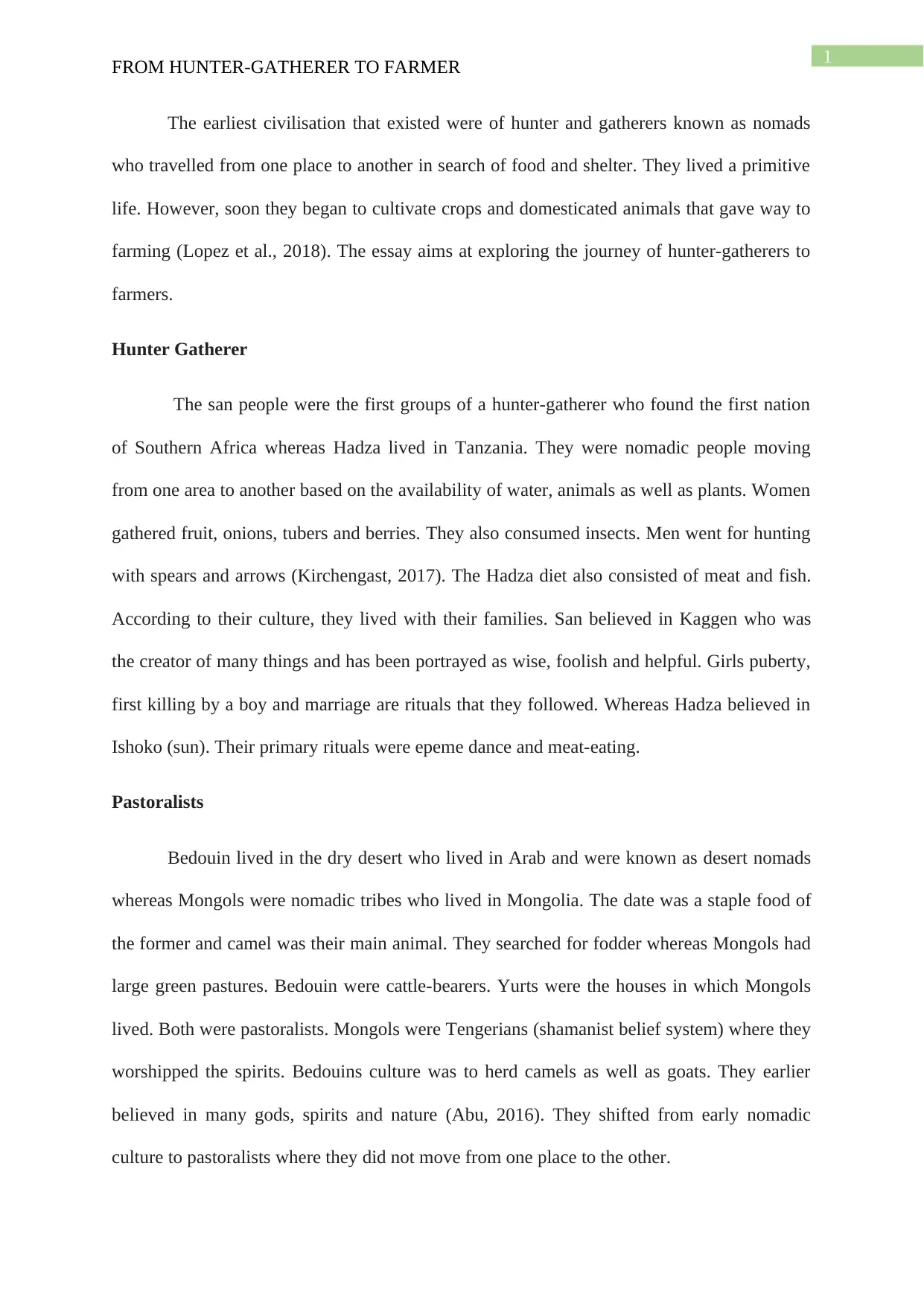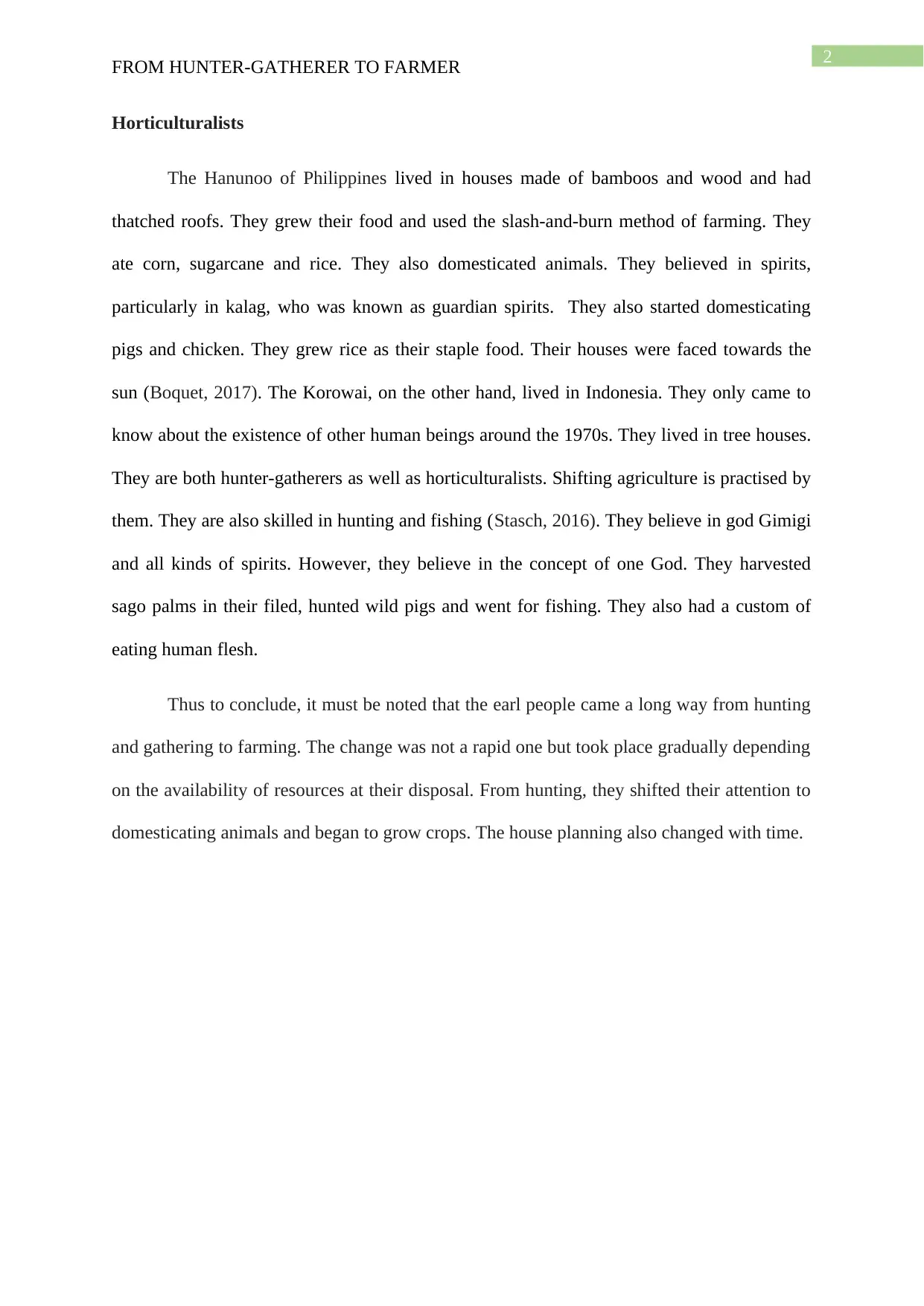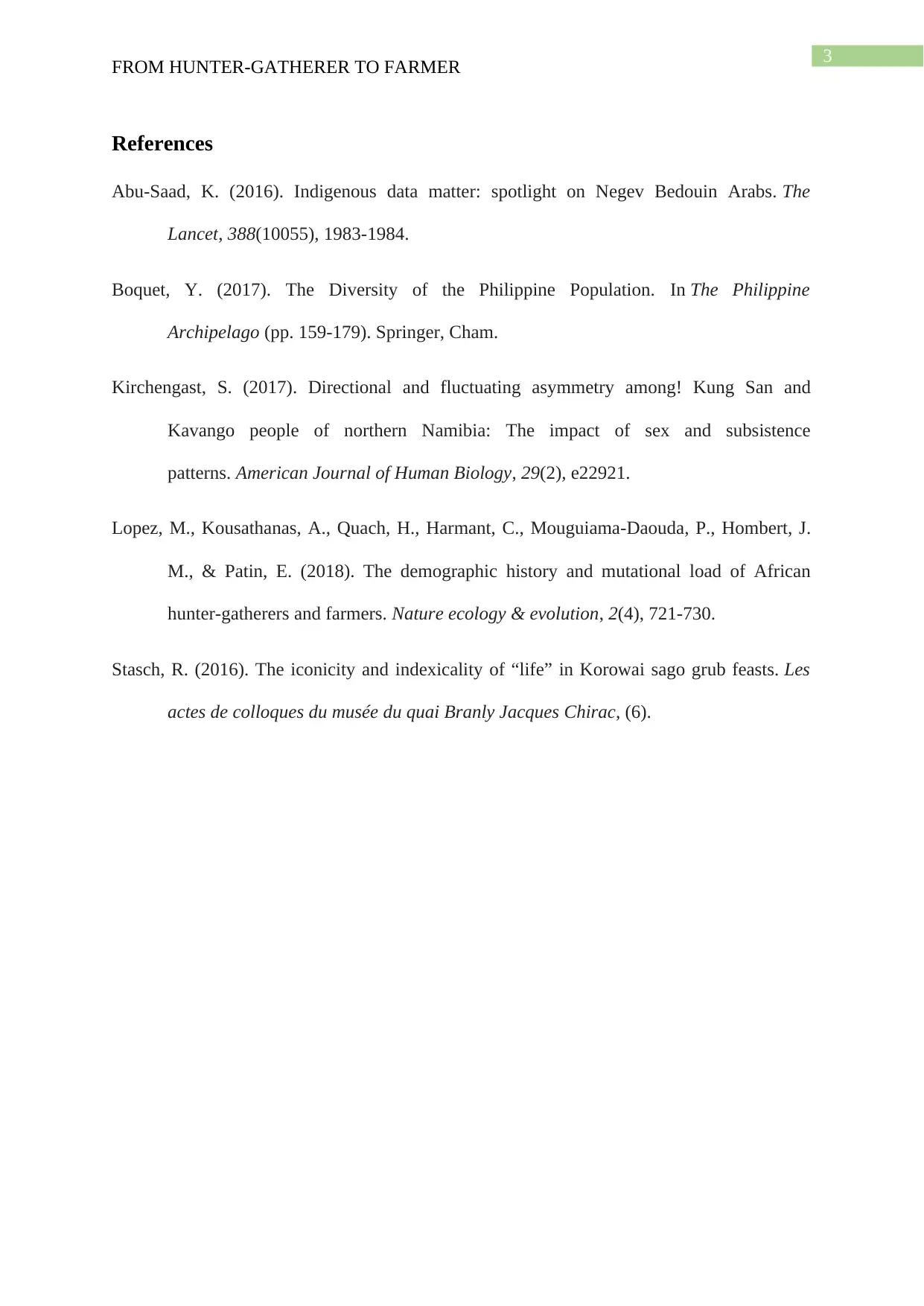Essay on the Evolution: Hunter-Gatherer to Farmer Societies
VerifiedAdded on 2022/08/11
|4
|844
|24
Essay
AI Summary
This essay delves into the significant transformation of human societies from hunter-gatherers to farmers, tracing the evolution of early civilizations. It begins by examining hunter-gatherer groups like the San and Hadza, highlighting their nomadic lifestyles, diets, and cultural practices. The essay then explores the emergence of pastoralists, such as the Bedouin and Mongols, and their adaptations to arid environments. Subsequently, it investigates horticultural societies, including the Hanunoo and Korowai, and their transition to settled agriculture, including their farming methods, staple foods, and belief systems. The essay concludes by emphasizing the gradual nature of this shift, influenced by resource availability and technological advancements, and the subsequent changes in social structures and living arrangements.
1 out of 4





![[object Object]](/_next/static/media/star-bottom.7253800d.svg)